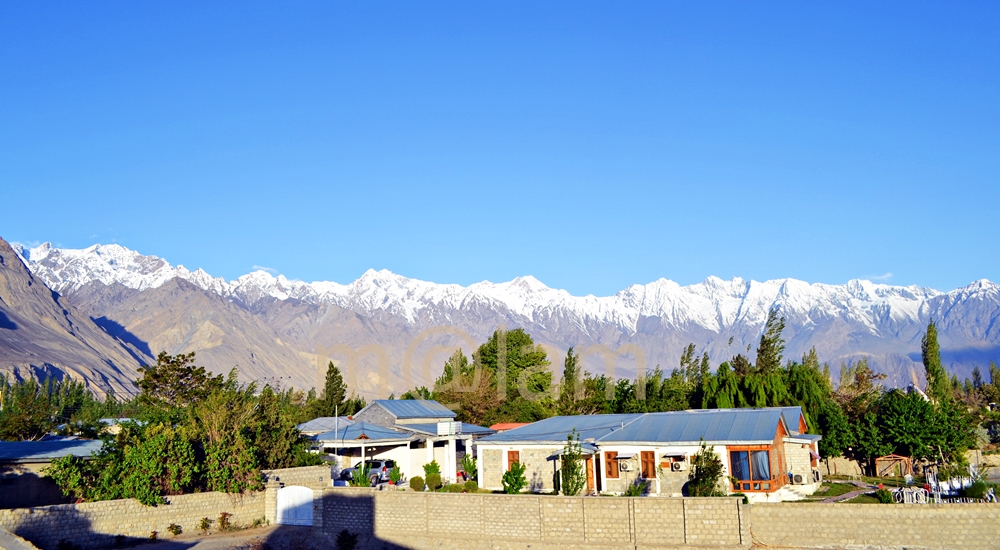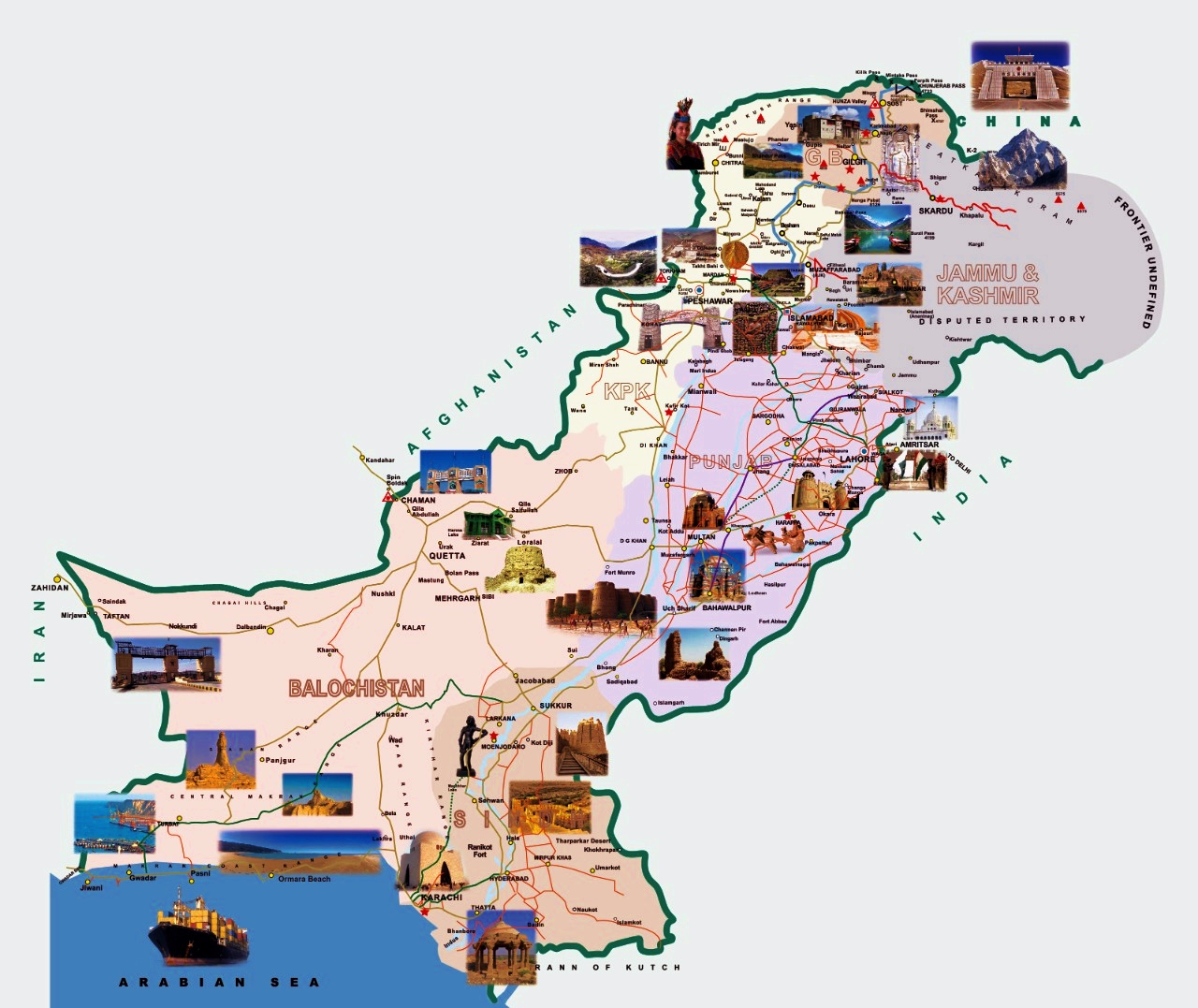Blossom in Gilgit-Baltistan – A Breathtaking Splendor
Nestled amidst the towering peaks of the Hindukush, Himalayas, and Karakoram ranges, Gilgit-Baltistan is renowned for its mesmerizing landscapes and rich cultural heritage. Blossom in Gilgit-Baltistan is a breathtaking splendor. Each spring, this region experiences a unique phenomenon where colorful blossoms transform the rugged terrain into a paradise on Earth. Particularly in tiny valleys filled with fruit orchards, the blooming trees paint a unique picture of nature against the mountainous backdrop.
The journey along the Karakoram Highway, especially from Gilgit to Hunza, offers tourists a lifetime experience. Particularly because of the orchards filled with flowering trees emitting sweet fragrances. Likewise, the journey to the Phunder Valley from Gilgit, and to the Shigar and Khaplu Valleys from Skardu, presents captivating sceneries. Every turn reveals unexpected vistas of natural contrast. From blue skies to emerald rivers, The scenery captivates the soul of every beholder amidst the stark contrasts of rugged terrain and delicate blossoms.
Blossoming Season in Gilgit-Baltistan
The blossom season in Gilgit-Baltistan is a captivating spectacle that draws tourists from across the globe. The harmony of diverse contrasts unfolds, offering a glimpse into the sublime beauty that graces this tranquil corner of the world. The timing of these blossoms varies depending on altitude, temperature, and precipitation. Particularly, the Cherry and Apricot Blossom season is renowned for its brevity and beauty. Lasting only about two months, from March to the end of April, the Cherry blossom season enchants all who inhabit Gilgit-Baltistan with its serene and picturesque scenery.
Geographical Features:
Altitude:
Gilgit-Baltistan’s high altitude, ranging from 1,500 to 8,000 meters above sea level, contributes to its diverse flora and fauna. The varying altitudes create microclimates conducive to different types of blossoms, from manmade orchards to wildflowers in the pastures.
Climate:
The region experiences a temperate climate, with cold winters and mild summers. The transition from winter to spring triggers the blossom season, usually beginning in March and lasting until April in the low-altitude regions. It lasts till June in the high-altitude valleys and pastures. This rejuvenation of nature delights every beholder with its captivating beauty.
Flora and Fauna:
Gilgit-Baltistan boasts a diverse range of flora, including wild roses, tulips, and various fruit trees. This rich vegetation provides vital habitats for indigenous wildlife such as ibex, snow leopards, and migratory birds.
Tourist Attractions during Blossom Season
This is the perfect season to explore Gilgit-Baltistan because the environment is mild and hence the weather cannot obstruct adventure activities. However, it isn’t just the weather that brings charm to Gilgit-Baltistan, but it is also the blossoming trees that create a contrast of natural colors to enchant the senses. Those lovely white and pink blossoms seldom refuse to bring joy to the visitors’ faces. Many tourists along with local people visit the enchanting valleys of Gilgit-Baltistan including Hunza & Nagar, Bagrot, Ghizer, Skardu, Shigar, and Khaplu during this time to enjoy this beautiful season with enthusiasm. Below are the details.
Bagrot Valley

The magnificent Bagrot Valley, situated approximately 35km southeast of Gilgit, and accessible within an hour. It is a recommended half-day tour destination for those staying overnight in Gilgit or traveling from Gilgit to nearby destinations. During the blossom season, Bagrot Valley undergoes a magical transformation, as vibrant colors and enchanting fragrances envelop the landscape. With the arrival of spring, almond, apricot, peach, and apple trees bloom; adorning the valley with a breathtaking display of nature’s beauty. Against the backdrop of majestic mountains, the blossoms create an ethereal charm, captivating the hearts of all who witness this natural spectacle.
Hunza Valley

Hunza Valley is celebrated for its picturesque landscapes and terraced fields embellished with fruit orchards. Comprising a series of tiny valleys in the lower, central, and upper regions, it offers a diverse and enchanting experience. The Hunza River serves as a natural boundary between the valleys of Hunza Valley and Nagar. Both valleys are guarded by towering mountains. Visitors are treated to the mesmerizing sight of cherry, apricot, and apple blossoms set against the backdrop of snow-capped peaks in Lower and Central Hunza. Meanwhile, the upper Hunza valleys, situated at altitudes exceeding 2500 meters, experience the blossom season later, typically in May and June.
Nagar Valley

The Nagar Valley lies adjacent to Hunza Valley, separated only by the Hunza River flowing through a gorge flanked by towering mountains. While Hunza Valley provides magnificent views of the mountains in Nagar, the valleys of Nagar offer the best vantage points for admiring the beauty of Hunza’s mountains. Driving along the Karakoram Highway, visitors can delight in the charming orchards of Hunza and Nagar. Additionally, Hoper Valley in Nagar is renowned for its unparalleled grandeur during the blossom season, offering a truly captivating experience for travelers.
Phander Valley
Phander Valley, situated approximately 170km from Gilgit along the Gilgit-Shandur road, is renowned for its pristine beauty throughout the year. Its turquoise-colored waters flowing through the valleys create a stunning spectacle. This hidden gem offers travelers a tranquil ambiance where they can immerse themselves in the splendor of cherry blossoms and alpine meadows. Visitors can also enjoy various activities such as fishing and camping amidst the serene surroundings of Phander Valley.
Skardu

Nestled amidst towering mountains and turquoise lakes, Skardu provides a serene retreat for nature enthusiasts seeking solace in the lap of pristine beauty. Skardu is accessible directly from Islamabad by air and by road along the Karakoram Highway to Jaglot and then via Jaglot-Gilgit road to Skardu. During the blossom season, the valleys burst into life with vibrant hues of wildflowers and fruit trees in full bloom. Lower Kachura, Upper Kachura, Chundah Valley, and Soq Valley epitomize the splendor of blossoms, offering a feast for the senses against the backdrop of majestic peaks and crystal-clear waters.
Shigar Valley

Located approximately 45km from Skardu, the Shigar Valley, can be accessed via the renowned Sarfaranga Desert by crossing the Indus River, offering a gateway to the Baloro Glacier. This glacier, stretching 63km long, leads to a mountain kingdom where four of the five highest mountains in the world reside. The valley follows the course of the Shigar River, near the confluence of the Shigar and Indus Rivers. Abundant in apricot trees, Shigar unveils mesmerizing scenery during the blossom season, with vibrant colors painting the landscape. Its architectural beauty lies in the traditional houses constructed with mud walls and wood, showcasing a unique blend of culture and aesthetics preserved over time. Shigar makes for an ideal day excursion from Skardu, inviting visitors to immerse themselves in its rich natural and cultural heritage.
Khaplu Valley

The Khaplu Valley is situated approximately 102km from Skardu Town. Khaplu offers striking beauty with its tiny valleys nestled along the Indus River, extending all the way to the Hushe Valley. However, due to its higher altitude, the blossom season arrives slightly later compared to Skardu town. Surrounded by several enchanting valleys, Khaplu Valley is best explored with an overnight stay, allowing visitors to fully immerse themselves in the blossoming beauty of the region.
Types of Blossoms
Gilgit-Baltistan is a region in northern Pakistan known for its natural beauty and stunning landscapes. It is home to a variety of flowering plants, including several species of blossoms. Gilgit-Baltistan experiences a diverse range of flora due to its varied topography and climate. Springtime in Gilgit-Baltistan brings about a spectacular display of blossoms as the region’s valleys and mountains burst into a riot of colors. Some of the flowers that bloom in Gilgit-Baltistan include:
Almond Blossom

In Gilgit-Baltistan, almond blossom mark the transition from cold winters to the arrival of spring in the lower valleys. Found primarily in the valleys surrounding Gilgit town, which sits at 1500 meters above sea level, the almond trees are among the first to bloom. While not as abundant as apricots and cherries, the almond blossoms bring an early beauty to the valleys, signaling the beginning of the season of renewal.
Apricot Blossom

In Gilgit-Baltistan, apricot trees flourish abundantly. Their branches adorned with delicate pink and white blossoms that carpet the valleys and hillsides. The fragrance of these apricot blossoms wafts through the air, imbuing the surroundings with a surreal and enchanting atmosphere.
Cherry Blossom

With their vibrant hues of pink and white, Cherry blossom in Gilgit-Baltistan, grace the landscape with splendor, symbolizing renewal and the transient beauty of life. These fleeting blooms create breathtaking vistas against the backdrop of the snow-capped mountains. Particularly, the of Hunza and Nagar valleys along the Karakoram Highway.
Apple Blossoms

The apple blossoms in Gilgit-Baltistan adorn the orchards with their delicate white and pink petals, heralding the arrival of spring. Like apricot trees, a variety of apple trees are found mostly in the Hunza Valley and Nagar Valley. The fragrant aroma of these blossoms fills the air, creating a delightful atmosphere that signals the beginning of the growing season. As the apple trees burst into bloom, they transform the landscape into a scene of ethereal beauty, captivating all who behold them.
Peach Blossom

Though fewer in number, Peach blossom in Gilgit-Baltistan, stand out with their vibrant colors, creating a striking contrast against the backdrop of the surrounding landscape filled with other blossoming trees and majestic mountains.
Wildflowers:

Gilgit-Baltistan is home to a variety of wildflowers, including forget-me-nots, primroses, and blue poppies. These flowers can be found carpeting the meadows and hillsides, adding to the region’s natural beauty.
Rhododendrons:

In higher elevations, particularly in areas like Deosai National Park, rhododendrons bloom in late spring or even in summer. These flowers paint the landscape with their bright red, pink, and purple flowers.
Cultural Significance
The arrival of blossom season carries profound cultural significance for the people of Gilgit-Baltistan, who greet the advent of spring with passionate zeal. Festivals and age-old ceremonies herald the beginning of this season, uniting communities in jubilant revelry. Navroz or Nawruz, celebrated in Hunza, Nagar, Gilgit, Ghizer, and Baltistan, stands as a testament to this rich cultural heritage, binding together the diverse tapestry of traditions that define the region.
Photography Opportunities

Blossom in Gilgit-Baltistan becomes a magnet for photographers eager to capture its awe-inspiring beauty. The vivid hues, striking vistas, and rich cultural tapestry offer a plethora of opportunities for capturing breathtaking images. Not only do photographers from neighboring Asian countries like Thailand, Malaysia, Indonesia, Myanmar, and Japan flock to the region, but Western tourists also join in the pursuit of capturing the essence of this unique landscape. Typically, these visitors spend about a week to 12 days immersing themselves in the splendor of Gilgit-Baltistan, ensuring they seize the most memorable moments through their lenses. With each passing year, the number of international tourists exploring Gilgit-Baltistan continues to rise. The region also attracts visitors from countries previously uncharted in the region’s tourism landscape.
Blossom Festival
Blossom festivals in Gilgit-Baltistan are a cherished tradition. These festivals serve as vibrant celebrations of nature’s beauty and as catalysts for promoting tourism. Among these festivals, Navroz (New Year) holds a prominent place, being widely celebrated throughout the region. During these festivals, visitors are treated to a delightful array of cultural performances. Besides tantalizing local cuisine, visitors also enjoy a captivating glimpse into the region’s rich and diverse heritage.
Economic Impact
The blossom season plays a pivotal role in bolstering the economy of Gilgit-Baltistan. The season helps generates substantial revenue through various tourism-related activities. Accommodation, transportation, and the sale of handicrafts are among the primary sources of income during this time. The surge in tourist numbers presents local communities with opportunities to demonstrate their warmth and hospitality while showcasing their exceptional craftsmanship.
Visitors Guide
Visitors to Gilgit-Baltistan are urged to embrace responsible tourism practices to minimize their environmental footprint. Respecting local customs, patronizing local businesses, and adhering to designated trails are essential steps in preserving the region’s natural beauty for generations to come.
Sustainable Tourism
In Gilgit-Baltistan, sustainable tourism practices are vital for safeguarding its delicate ecosystem. Embracing eco-friendly accommodations and supporting community-based initiatives are crucial steps in this endeavor. By advocating responsible travel, we can safeguard the splendor of the blossom season for the enjoyment of future generations.
Community Involvement
Involving local communities in conservation endeavors and tourism advancement empowers them to take ownership of their natural heritage. Through collaborations between government bodies, NGOs, and community organizations, we can cultivate a sustainable future for Gilgit-Baltistan.
Blossom in Gilgit-Baltistan stands as a testament to the enduring beauty and resilience of nature. As we admire the vibrant colors and fragrant blooms, let us also recognize our duty to safeguard and conserve this precious gift for future generations. The tradition of celebrating cherry blossoms harkens back to ancient times. Particularly, when monarchs would compose poetry and revel in music beneath the blossoming trees. The graceful form and delicate hues of cherry blossoms embody humanity’s ideals of harmony and refinement. The air is perfumed with the gentle scent of pink petals, carried by the breeze as it caresses the blossoms. Alongside these iconic blooms, an array of spring-flowering trees including passion fruit, cherry, and walnut contribute to the captivating spectacle of nature’s renewal.
FAQs (Frequently Asked Questions)
When is the best time to visit Gilgit-Baltistan for the blossom season?
The best time to visit Gilgit-Baltistan for the blossom season typically spans from March to April in main tourist spots. While it extends until May and June in higher-altitude areas. However, the exact peak bloom times may vary each year due to factors like altitude and weather conditions.
What types of blossoms can be found in Gilgit-Baltistan?
Various blossoms can be found in Gilgit-Baltistan, including almonds, apricots, cherries, peaches, and apple blossoms, among others.
Are there any special events or festivals during the blossom season?
Special events and festivals are held during the blossom season in different parts of Gilgit-Baltistan. These events often feature cultural performances and traditional celebrations. Notably, Navruz is a significant event occurring on March 21st every year.
How can visitors contribute to conservation efforts in Gilgit-Baltistan?
Visitors can contribute to conservation efforts during Blossom in Gilgit-Baltistan by embracing sustainable tourism practices. Moreover, respecting local customs, and engaging in community-based initiatives helps preserving the region’s natural heritage.
What are some recommended activities for tourists during the blossom season?
Recommended activities for tourists during the blossom season include hiking, photography, attending cultural events, and exploring the breathtaking scenery of Gilgit-Baltistan’s valleys.











